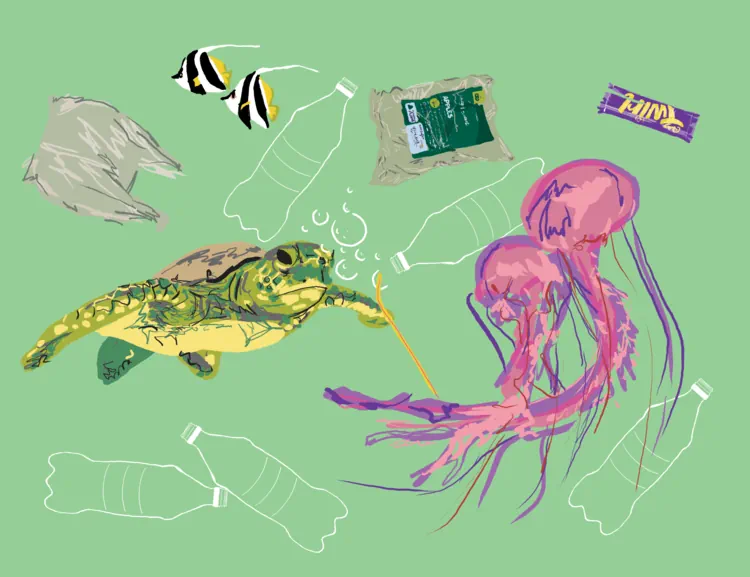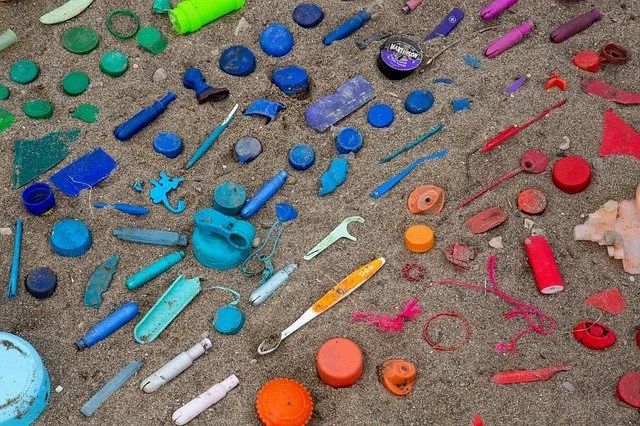
How Does Plastic Waste Affect the Ocean?

Table of Contents
Introduction
According to estimates, the entire human population throws away four million tons of trash on daily basis, out of which 12.8 percent is plastic. The studies have revealed that around 8 million tons of plastic waste produced in the world are dumped into the ocean on annual basis. This plastic waste in the ocean is highly destructive for marine life, resulting in the death of millions of different marine species, endangered the lives of marine life, and disturb the aquatic ecosystem.
The pollution in the oceans, as a result of plastic waste, will have serious repercussions for our environment and will ultimately affect human life on the planet earth. In this article, we will explore the sources of plastic waste dumped into the ocean, its negative consequences for marine and human life, and the measures which have to be taken to address the momentous challenge of plastic in the ocean.
Where does the plastic waste come from?
Plastic is everywhere, from our food packaging, furniture, automobiles, and electronic items to the products we use on daily basis such as the toothbrush. According to statistics humans produce more than 300 million tons of plastic annually, out of which 50 percent is intended to be used for one time and then discarded in the environment. The food packaging, plastic bottle, straw, plastic food carriers, and numerous other plastic products are discarded after serving the purpose. This plastic waste pollutes our land, air, and ocean. Out of the 300 million tons of plastic, 8 million tons of plastic is dumped into the ocean annually. Plastic waste becomes part of the ocean through different means. One of the means is the cargo carried by the ships. Similarly, plastic fishing nets and similar products add to pollution.
The most significant portion of the plastic in the ocean entered through the rivers which contain tons of plastic waste from the land. Christian Schmidt a hydrogeologist and his colleagues at the Helmholtz Center for Environmental Research in Leipzig, Germany study the concentration of plastic in 57 rivers from all around the world. The results of the research were published in the Environmental Science and Technology, show that rivers dump from 0.47 million to 2.27 million metric tons of plastic into the seas. The Yangtze River of china dumps an estimated 1.5 million metric tons of plastic waste into the sea. Similarly, with the increase in the human population, the number of plastic products will multiply and the amount of plastic in the ocean will also increase.

Top 10 Polluters from Scientific Americancom
Why plastic is detrimental to the Ocean?
One of the most significant features of plastic is its durability, due to which it is used in the production of different products. However, the durability of the plastic is also the cause of the problem. Plastic is non-biodegradable and it cannot be decomposed by the microbes present in our environment. Therefore, the plastic produced remains part of our ecosystem for hundreds of years. Researches have indicated that different types of plastic can take between a few decades to approximately millions of years to disintegrate. Therefore, plastic waste will remain in our environment for hundreds of years and will continue to destroy our environment. Similarly, the plastic dumped into the ocean will remain in the ocean for hundreds of years and will continue to destroy aquatic life.
The plastic waste present in the ocean causes pollution and affects aquatic life. The marine life is affected by the plastic through ingestion of plastic particles, and absorption of micro plastic particles into their bodies. Similarly, the plastic nets used for fishing also cause harm to marine life. Different species of marine life get entangled in the nets which may result in serious injuries to their bodies and some cases result in the death of the marine life. The plastic nets and other plastic products also affect the habitats of marine life such as the nets get tangled in precious reefs and may cause them to break apart. The plastic particles floating on the surface of the ocean affects the planktons and other living creatures present in the ocean.
What are the consequences of plastic for marine life?
Researches have indicated that around 80 percent of the litter in the ocean is made of plastic products. The plastic waste in the ocean results in serious consequences for marine life. The report of the Ocean Conference conducted by the United Nations indicates that millions of marine species are affected by plastic waste. According to the report, plastic is harming more than 800 different marine species, it includes 40 percent of marine mammals and 44 percent of the sea bird species. The plastic waste present in the ocean is ingested by marine life, as the different colors of plastic resemble the prey of different species. The plastic ingested by marine life cause internal injuries and harm their bodies. Similarly, the illusion of a full stomach due to plastic leads to starvation. The internal injuries and starvation lead to the death of thousands of marine life daily. The report of the United Nations has indicated that plastic waste is responsible for the killing of 1 million sea birds, 100,000 sea mammals and thousands of other marine species.

Turtle in the water with plastic from maryflorahart
According to some estimates. If we, humans will continue to produce plastic products at the rate we are producing now, then the amount of plastic in the ocean will multiply each year and by the year 2050 oceans will carry more plastic mass than fish which will destroy the entire eco-system. The plastic present in our oceans is harming marine life in different ways. It is not only ingested by marine life but the micro-plastic particles which are produced as a result of water currents are absorbed into the bodies of marine life. The report of the United Nations has indicated that approximately 51 trillion micro plastic particles are present in the oceans which is equivalent to 500 times more than the stars in our galaxy. These micro plastic particles, absorbed into the body of the marine organisms contain toxic chemicals that may result in different diseases and cause suffering to marine life.
What are the consequences of plastic for sea birds?
The plastic in the sea not only affects the marine life but it has tremendous negative consequences on sea birds. Many seabirds engulfed plastic floating on the surface of the ocean because the color of the plastic resembles their prey. For example, Albatross, often mistake plastic item for squid, one of their main foods. Similarly, other hungry bird’s intake plastic under the illusion of food. The research conducted by scientists has found different types of plastic products in the bodies of sea birds. Some of the most common plastic products found in the bodies of the sea birds which has caused their death include products of everyday use such as plastic straw, plastic bottles, bottle caps, and similar products. The sea birds engulf these products which may cause internal injuries, block their digestive system, and result in the death of hundreds of sea birds on daily basis. Similarly, the micro plastic particles present in the ocean also have negative consequences on the bodies of the birds which they intake along with their prey. The effects of the plastic floating on the surface of the ocean, and the micro-plastic particles have resulted in the death of thousands of sea birds including species which are endangered.

Pixabay/plastic products found inside the bodies of seabirds (pixabay)
What are the consequences of plastic on the human body?
The plastic present in the ocean is not only detrimental to marine life and the sea birds but it may have serious consequences for human health. In 2008 Pacific Gyre Voyage, Algalita researchers study the concentration of plastic in different species of fish. The researchers found that many different species of fish are ingesting plastic products mainly micro plastic which contains toxins and these micro-plastic particles present in the bodies of fish may enter human cells when they are used as a food product. The toxins present in the micro-plastic particles may cause different diseases in the human body. The toxins present in the bodies of sea life due to absorption and ingestion of plastic particles is very harmful to human health. Researchers have found that the toxins that enter the human body due to the intake of kinds of seafood may cause hormonal abnormalities and pose a serious risk to human health.

Fish on the plate maryflorahart
What is the way forward to address the challenge of plastic in the ocean?
The plastic dumped into the ocean each day is a serious threat to the survival of marine life and will have serious consequences for human life. Therefore, it is high time to recognize the severity of the issue and to take appropriate measures to address the momentous challenge. Different measures may be taken to address the challenge on different levels. As individuals, it is our responsibility to change our behavior and adopt eco-friendly means. We should use renewable products as an alternative to plastic products, avoid the use of one-time-use products such as plastic bottles. Similarly, the international community shall take measures to prepare collective action to address the issue. It may impose obligations on countries to separate plastics from water bodies before dumping them into the oceans. Similarly, it may fund different research projects to search for means to eliminate plastic already present in the ocean. It is a momentous challenge for all of us and together we have to contribute to resolving the issue.